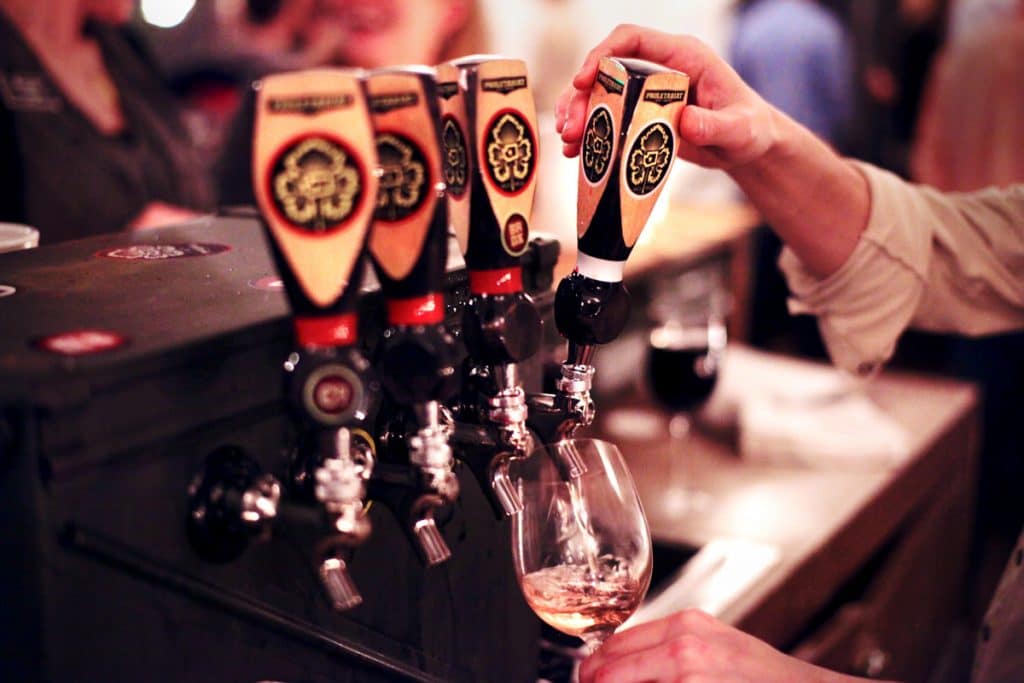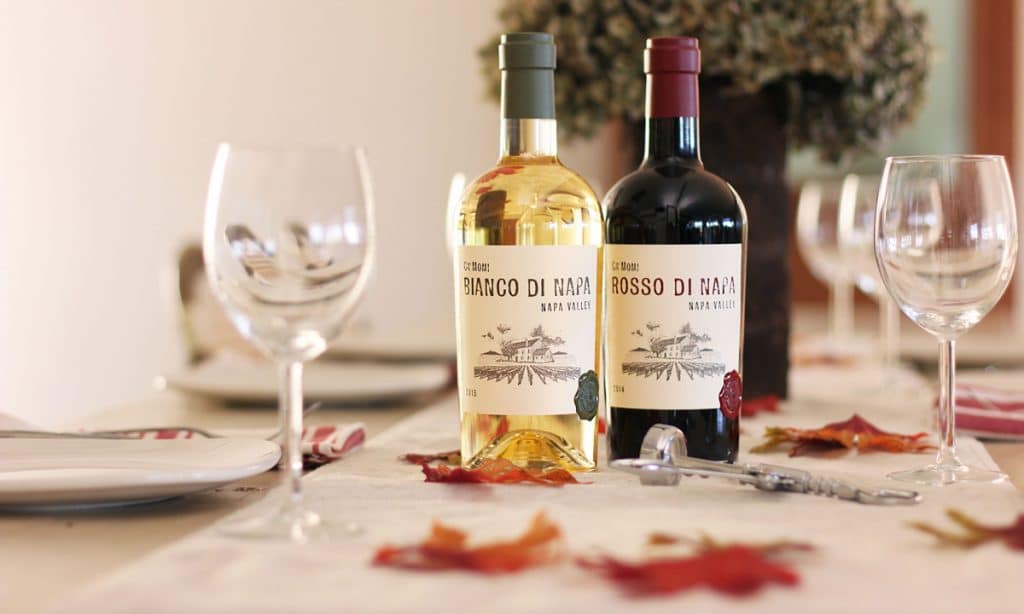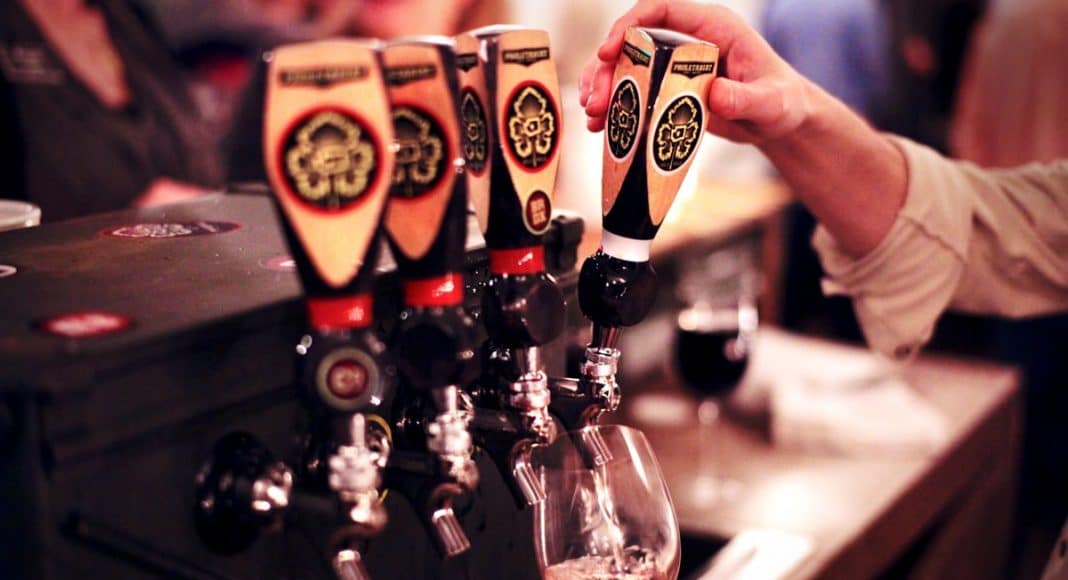According to the Wine Institute each U.S. wine-consuming resident knocked back an average of 2.83 gallons that year. But what about the packaging?
There are nearly 9,000 wineries in the United States. According to the Wine Institute, the amount of wine produced in 2015 almost tipped the scale at eight million gallons, with each U.S. wine – consuming resident knocking back an average of 2.83 gallons that year. The industry brings in upwards of $60 million in sales revenue and, according to 2016 Nielsen data, a lot of that isn’t coming from a bottle — it’s being poured from a tap, out of a can or from the spout of a box.
-
RELATED STORY: Here Are The Coolest Tech-Savvy Wine Gadgets Of 2017
The times, they are a’changin’. Eno-critic Robert Parker is to the wine industry what a Nokia flip phone is to Verizon: a distance, outdated memory that Baby Boomers are still having a hard time giving up. Wine drinkers are coming in all shapes and sizes and, in recent years as they come of age, millennials are the largest population of wine drinkers, with disposable tech-fueled incomes and a thirsty for something good, different and not their father’s packaging.
Pop A Top Again With Canned Wine
Nielsen reported a 125 percent increase in sales of canned wine in 2015, with sales skyrocketing from $6.4 million in 2014 to $14.5 million, which, if you do the math, is over 24 percent of the industry’s overall takings. And why shouldn’t it do well: it’s easy to access, effortless to pack and provides a single-serving option wine bottles cannot. Although Trader Joe’s has been repping the package since 2009 and Francis Ford Coppola’s Sofia Mini blanc de blanc four-packs of bubbles (with a straw included) have been on major retailer shelves since the turn of this century, this is still a relatively new packaging phenomenon for the wine world.
For Andrew Jones, owner and winemaker at Field Recordings on California’s Central Coast, he was looking for a way to get the spotlight on his modest venture. “I thought it was something fun and different,” Jones says of his Fiction and Alloy Wine Works canned brands. “I’m a small winery in a relatively new area for wine in California. It was worth a shot.”
-
RELATED STORY: The First Wine & Weed Symposium Debuts This Summer
And it worked. The wine received coverage in everything from major wine rags to the Today show, twice. Jones estimates the winery sells four 16-ounce cans retail to every one sold on-premise (restaurant or bar) but those that have embraced the packaging have done well with it, showing room for growth in both areas of canned wine consumption.
Tapping Of The Wine Keg

Wine poured from the tap might not only be a smarter method for wine sold at restaurants and bars, but it also reduces the drink’s carbon footprint. For Proletariat Wines, one of Washington State’s inaugural makers of draft wine, the move to alternative packaging was just good, sustainable business. Now with more than 300 locations pouring their kegged wine on tap, the draft-only winery estimates it has saved nearly 400 tons in discarded glass.
In addition to a smaller eco-imprint, co-founder Darin Williams says Proletariat’s reason for kegging was to deliver freshness and consistency. “Draft systems are designed with that in mind for beer,” he says, noting how they worked with beer industry colleagues to determine the most efficient method for successful kegged wine. “The category is steadily growing across the U.S. so we’re cautiously optimistic that opportunities will continue to present themselves.”
-
RELATED STORY: Here’s Why You Should Be Drinking Chardonnay
The strategy is simple: wineries fill kegs of wine instead of bottles (with roughly 26 bottles in one keg), restaurants and bars dispense the juice via their draft system, skipping the bottling altogether. On tap, waste is eliminated — instead of having to dump a too long-opened bottle down the drain, the airtight seal of draft lines from keg to tap provide a steady stream of freshness and quality to the glass. Plus, there isn’t a need for glass bottles, labels or cardboard cases; even transportation costs are reduced, downsizing the overall environmental impact.
The Box Is Back
https://www.instagram.com/p/BO7zKprDsx1
If you didn’t learn how to drink wine from a box with a bladder of booze strapped inside it, then you didn’t live in college. It’s not just Franzia that’s on the shelf anymore; the box is back in retailers in the form of a carton package. The material, like the popular Tetra-Pak brand, is lightweight, eco-friendly and easy to transport. Although it does have a shelf life, often times expiring after a few years, it is a friggin’ squeeze-style juice box of wine.
“The alternative packaging and intrinsic personality of the Bandit brand has made these wines an instant hit with a number of outdoor enthusiasts, as well as those who simply appreciate the convenience of having great wine on-the-go,” says Brie Baltzell, director of marketing for Bandit Wines’ and parent company Premium Brands.
-
RELATED STORY: 13 Tasting Rooms That Are Already Drunk
Classic varieties are “boxed” in the container package, sans bladder bag, and cracked open with a simple twist-seal similar to a carton of milk. Stuff it in a purse for movie theater outings, pack it in a picnic basket or splash it into a glass under your desk at the office, the one-liter boxes also give about eight ounces extra than a typical bottle of wine.
Height Doesn’t Matter

Heralded as the heritage bottle, the short and stout “stubby” bottle has been making a comeback in the beer industry, with mega-makers like Coors, Rainier and Budweiser bottling shorties. In the ever-competitive wine market, a handful of wineries have fashioned bottles modeled in a similar style, akin to the glassware that holds Port or rustic Chianti. The bottle, which is seen both in 500- and 750-milliliter options, also uses less glass than regular bottles, requiring less resources to produce and to ship.
-
RELATED STORY: Cali Wine Industry Worried It May Lose Workers To Weed
For Paul Englert, director of marketing for Ca’ Momi Wines in Napa Valley, this custom bottle came into fruition as a combination of the winery’s Italian heritage and the environmental benefits that pushed the winery to differentiate itself with its squatty 750-milliliter “Corta” bottle. “It’s getting harder and harder to stand out simply with label design,” Englert says of the ancient Italian-inspired design that is used for two proprietary Napa blends. “The unique bottle instantly catches your attention and your curiosity takes over. Whether it’s on a retail shelf or a back bar, it begs the question: what’s that? … We use this as a great opportunity for a conversation, which is what wine is all about.”
[gravityform id=”13″ title=”false” description=”true”]
MORE RELATED STORIES
[soliloquy id=”27344″]


